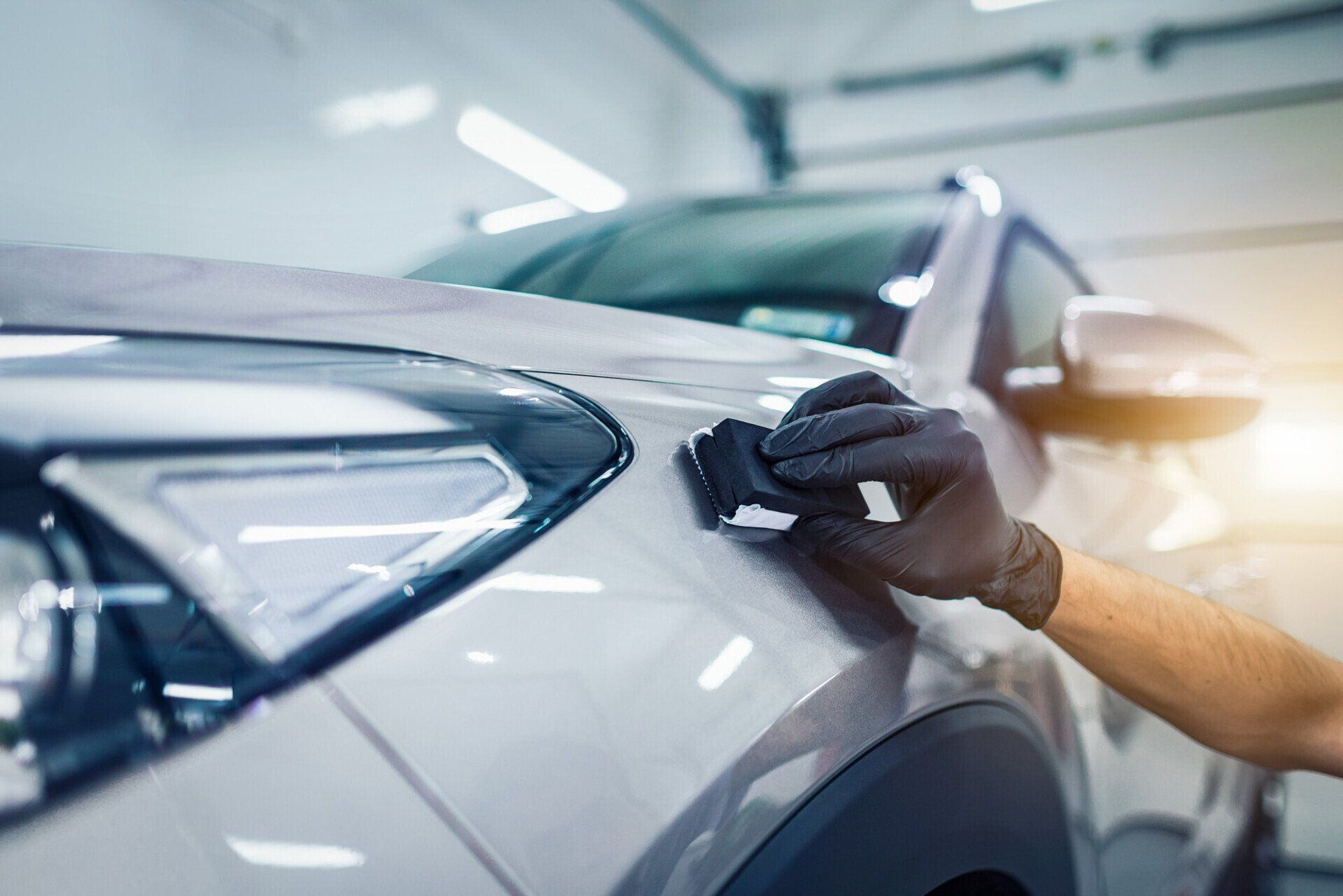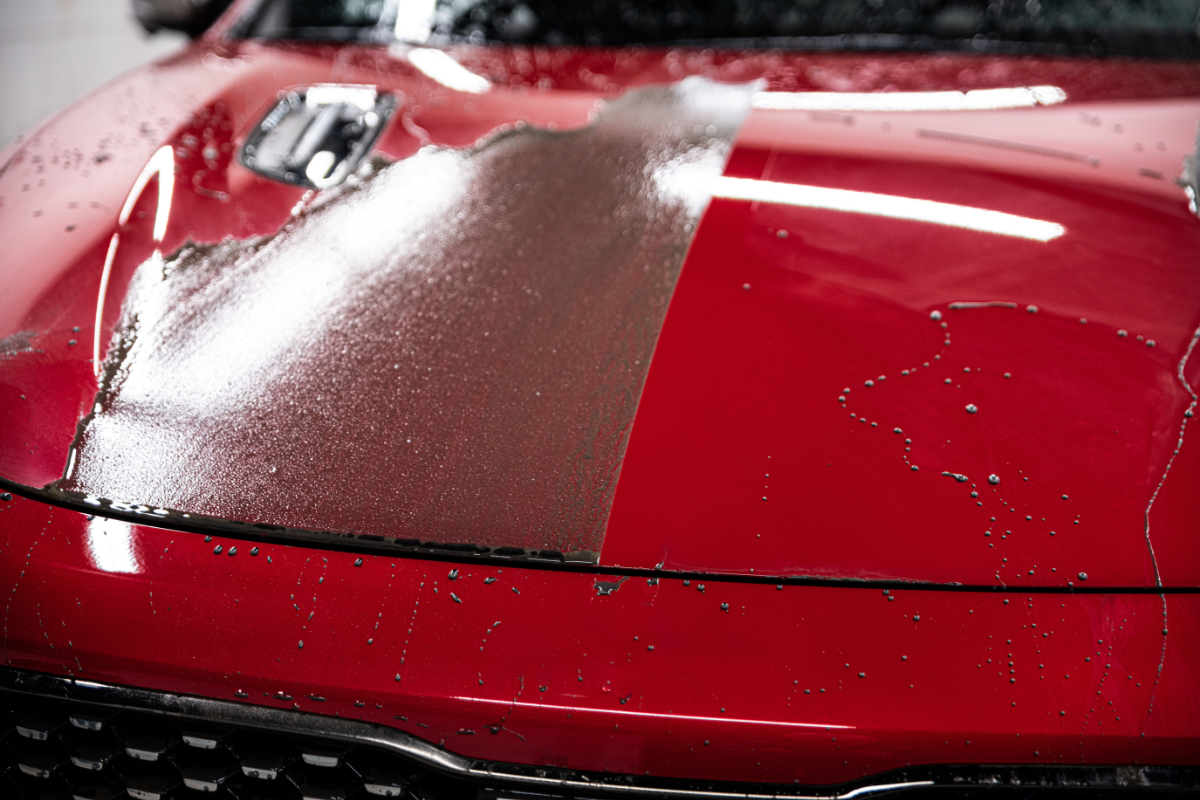Ceramic Coatings San Jose: Enhance and Safeguard Your Vehicle's Complete
Ceramic Coatings San Jose: Enhance and Safeguard Your Vehicle's Complete
Blog Article
Introducing the Science Behind Ceramic Coatings: How Does It Job and Why Is It Superior to Traditional Alternatives?
Ceramic finishings have actually been acquiring appeal in different markets for their phenomenal performance and durability. The science behind these coatings goes past mere surface protection, delving into the intricate chemistry that makes them stick out from standard options (ceramic coatings san jose). Recognizing exactly how ceramic layers job and why they outmatch standard choices is important for those seeking to enhance the durability and strength of their products. What specifically sets ceramic coatings apart, and how do they attain such impressive results?
The Chemistry of Ceramic Coatings
In recognizing ceramic finishings, delving into the complex chemistry behind their composition is crucial for grasping their performance and resilience. Ceramic coatings are primarily composed of silicon dioxide (SiO2), which forms a solid and protective layer when related to numerous surface areas. This chemical structure supplies remarkable resistance to warmth, chemicals, and corrosion, making ceramic finishes very searched for for a vast array of applications.
The chemistry behind ceramic layers involves the development of covalent bonds between silicon and oxygen atoms, producing an inflexible network that enhances the layer's toughness and sturdiness. In addition, the visibility of various other components such as titanium, light weight aluminum, and zirconium further enhances the finishing's homes, supplying increased firmness and attachment to surface areas.
Understanding the chemical composition of ceramic layers enables the customization of solutions to suit particular requirements, whether it be for auto, commercial, or domestic functions. By using the power of chemistry, ceramic coatings continue to lead the way for superior protection and performance in various markets.
Benefits of Ceramic Coatings

Another substantial advantage of ceramic coverings is their hydrophobic nature. This residential property causes water to grain up and roll off the covered surface, lugging dirt and impurities with it. As a result, ceramic coatings make cleaning and keeping surface areas much less complicated and less lengthy. Ceramic finishings offer improved color and gloss deepness, offering surface areas a glossy and lively look. In general, the wide variety of advantages supplied by ceramic layers make them a remarkable option contrasted to typical coating techniques.
Just How Ceramic Coatings Bond
Ceramic finishings bond to surfaces with a process that involves molecular bond and chemical interactions. When a ceramic finishing is put on a surface area, it creates a solid bond by chemically adhering to the surface at a molecular level. This bond is created through the formation of covalent bonds, which are incredibly solid and durable. The ceramic layer's particles pass through the pores of the surface, developing a tight grip that withstands separation.
Additionally, the chemical communications in between the ceramic finishing and the surface area better boost the bond. ceramic coatings san jose. These interactions allow the ceramic coating to produce a constant and seamless layer on the surface, giving outstanding defense and durability. Unlike standard finishes that may rest on the surface without fully bonding, ceramic coatings develop an irreversible bond that is resistant to chemicals, UV rays, and severe ecological conditions

Basically, the bonding mechanism of ceramic finishes ensures a effective and durable protective layer that outperforms traditional finishing alternatives. This premium bond adds to the resilience, scrape resistance, and long life of ceramic finishings, making them a favored selection for various applications.
Longevity of Ceramic Coatings
The remarkable longevity of ceramic finishings comes from their durable molecular adhesion and chemical interactions with surfaces, guaranteeing a long lasting protective layer that surpasses standard coating alternatives. When applied, ceramic coverings develop a solid bond with the substratum, producing a resilient obstacle against numerous environmental stress factors such as UV radiation, chemicals, and abrasions. This bond is so safe and secure that it can withstand the roughness of everyday usage without degrading or degrading promptly.
Unlike traditional finishings that may deteriorate gradually, ceramic finishings preserve click to investigate their honesty for an extended duration, supplying durable security for the underlying surface. The solid molecular framework of ceramic layers resists cracking, fading, and peeling, guaranteeing that the surface stays protected and visually pleasing for several years ahead. This durability not only minimizes the need for regular reapplications but also saves time and cash over time. Generally, the exceptional resilience of ceramic coverings makes them a superior option for safeguarding a large range of surface areas in various applications.
Ceramic Coatings Vs. Traditional Alternatives
In contrast to traditional layer methods, ceramic coverings provide an unique blend of longevity and safety capacities that establish them apart in numerous surface defense applications. Traditional options such as address wax or sealants provide a momentary layer of security that can subside promptly, needing frequent reapplication. On the various other hand, ceramic finishings form a strong bond with the surface area, producing a semi-permanent or long-term obstacle that is extremely resistant to abrasion, chemicals, UV rays, and extreme temperatures.
In addition, ceramic layers provide remarkable hydrophobic properties compared to typical finishes. The hydrophobic nature of ceramic finishes creates water to bead up and roll off the surface area, bring dirt and impurities with it. This self-cleaning result helps to keep the surface's tidiness and gloss for extended durations, decreasing the need for regular maintenance.
Furthermore, ceramic coatings have a thicker layer compared to typical choices, providing improved scrape resistance and protection versus minor influences. This sturdiness makes sure resilient efficiency and helps maintain the aesthetic appeal of the dealt with surface area for a prolonged duration.
Verdict
To conclude, the science behind ceramic coatings depends on their chemical make-up and bonding homes, making them remarkable to conventional alternatives. The benefits of ceramic layers include enhanced sturdiness and security for surface areas. By understanding exactly how ceramic layers work and their advantages over conventional choices, one can make enlightened decisions when thinking about covering options for different applications.
Unlike traditional finishes that might sit on the surface without completely bonding, ceramic coatings develop a long-term bond that is immune to chemicals, UV rays, and rough environmental problems.
The remarkable durability of ceramic finishes stems from their durable molecular attachment and chemical interactions with surface areas, guaranteeing a long lasting protective layer that goes beyond traditional covering options.Unlike traditional coatings that might weaken over page time, ceramic layers keep their integrity for an extended duration, offering lasting protection for the underlying surface.In comparison to conventional finishing techniques, ceramic layers provide a distinctive blend of toughness and safety capabilities that set them apart in numerous surface defense applications. By recognizing just how ceramic finishes work and their benefits over standard choices, one can make informed decisions when taking into consideration finishing alternatives for various applications.
Report this page